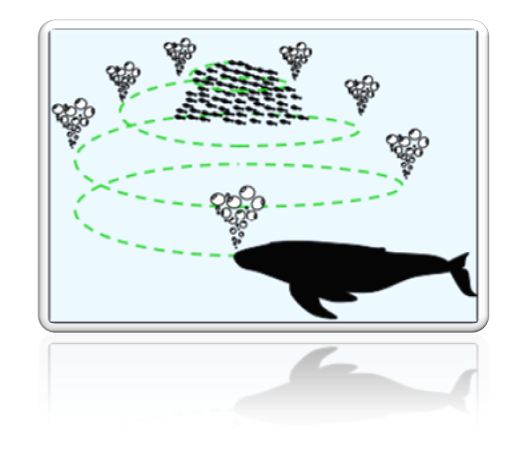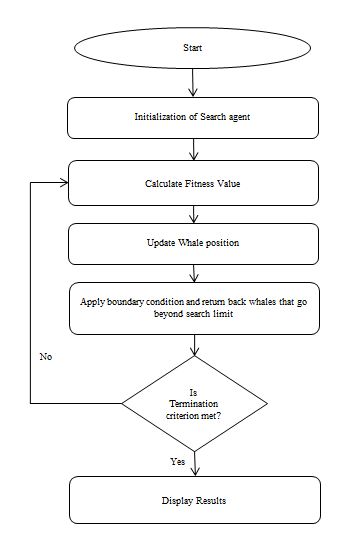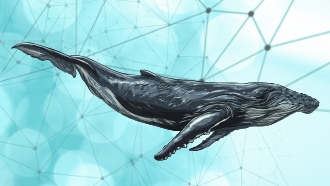Algorithm Tips For Developing Whale Optimization Algorithm (WOA) – Where And How It Apply In The Engineering And Medical Applications
In Brief
• The nature-inspired meta-heuristic optimization algorithm is the recent trend in Artificial Intelligence.
• The Whale Optimization Algorithm (WOA) is one of the nature-inspired meta-heuristic optimization algorithms
• The Whale Optimization Algorithm (WOA) is used in engineering and medical applications to solve complex optimisation problems.
The nature-inspired meta-heuristic optimization algorithm called the Whale Optimization Algorithm (WOA) is analysed in this blog. In 2016 Holland, (2019), the Whale Optimization Algorithm was proposed based on the hunting behaviour of the humpback whales Mirjalili and Lewis, (2016). Some of the interesting facts about the humpback whale are that it is one of the world’s largest mammals with great intelligence and emotions. The weight of the whale will be approximately 180 tons and it grows up to 30 meters. The humpback whales are great predators. Their hunting method is called bubble-net feeding technique. The Whale Optimization Algorithm was proposed based on the bubble-net hunting behaviour of the humpback whales.
The Whale Optimization Algorithm is widely used in engineering applications and medical application. The WOA is efficient algorithm; the key characters are, it is simple and easy to implement, gradient information is not required, local optima can be bypassed and used in a wide range of disciplinary challenges. Bubble-net hunting behaviour is represented in fig 1.


Working Procedure
- Search agent is initialized
- Then fitness is calculated
- Whale position is updated
- If whale crosses the boundary, the boundary limit is set to return back
- If the solution obtained then the result is displayed
- Else, loop continuously from the fitness calculation

Conclusion
The Whale Optimization Algorithm (WOA) is one of the nature-inspired heuristic optimization algorithms. Based on the hunting behaviour of the humpback whale, the WOA is proposed. It is used to solve different optimization problems in engineering and medical applications. The WOA is used to find optimal solutions in highly complex constraints in reasonable time period.
Future scope
- Using the WOA, brain tumour can be classified (Bo, Chao, & Francis, 2019).
- Classification of sentiments within online social media based on the theory of social impact using whale optimization algorithm(Akyol & Alatas, 2020)
- Opinion leader detection Opinion in online social network using WOA(Jain, Katarya, & Sachdeva, 2020)
- A guided population archive whale optimization algorithm for solving multiobjective optimization problems
- For the community detection algorithm, the whale optimization algorithm is used(Y. Zhang et al., 2020). WOCDA: A whale optimization-based community detection algorithm
- A whale optimization algorithm is used to solve global optimization problems(Sun, Yang, & Liu, 2019).
- Optimum position and size of the battery storage unit to minimize losses using WOA(Wong, Ramachandaramurthy, Walker, Taylor, & Sanjari, 2019).
- Positioning of charging stations for electric vehicles with service ability using WOA(H. Zhang, Tang, Yang, & Lan, 2019).
- Akyol, S., & Alatas, B. (2020). Sentiment classification within online social media using whale optimization algorithm and social impact theory based optimization. Physica A: Statistical Mechanics and Its Applications, 540, 123094. https://doi.org/10.1016/j.physa.2019.123094
- Aljarah, I., Faris, H., & Mirjalili, S. (2018). Optimizing connection weights in neural networks using the whale optimization algorithm. Soft Computing, 22(1), 1–15. https://doi.org/10.1007/s00500-016-2442-1
- Bo, Y., Chao, W., & Francis, A. (2019). New brain tumor classification method based on an improved version of whale optimization algorithm. Biomedical Signal Processing and Control, 56. https://doi.org/10.1016/j.bspc.2019.101728
- Guha, D., Roy, P. K., & Banerjee, S. (2019). Whale optimization algorithm applied to load frequency control of a mixed power system considering nonlinearities and PLL dynamics. Energy Systems, 1–30. https://doi.org/10.1007/s12667-019-00326-2
- Holland, B. J. H. (2019). Genetic Algorithms. Retrieved November 2, 2019, from https://www.scientificamerican.com/article/genetic-algorithms/
- Jain, L., Katarya, R., & Sachdeva, S. (2020). Opinion leader detection using whale optimization algorithm in online social network. Expert Systems with Applications, 142, 113016. https://doi.org/10.1016/j.eswa.2019.113016
- Mirjalili, S., & Lewis, A. (2016). The Whale Optimization Algorithm. Advances in Engineering Software, 95, 51–67. https://doi.org/10.1016/j.advengsoft.2016.01.008
- Sun, Y., Yang, T., & Liu, Z. (2019). A whale optimization algorithm based on quadratic interpolation for high-dimensional global optimization problems. Applied Soft Computing, 85, 105744. https://doi.org/10.1016/j.asoc.2019.105744
- Wong, L. A., Ramachandaramurthy, V. K., Walker, S. L., Taylor, P., & Sanjari, M. J. (2019). Optimal placement and sizing of battery energy storage system for losses reduction using whale optimization algorithm. Journal of Energy Storage, 26, 100892. https://doi.org/10.1016/j.est.2019.100892
- Zhang, H., Tang, L., Yang, C., & Lan, S. (2019). Locating electric vehicle charging stations with service capacity using the improved whale optimization algorithm. Advanced Engineering Informatics, 41, 100901. https://doi.org/10.1016/j.aei.2019.02.006
- Zhang, Y., Liu, Y., Li, J., Zhu, J., Yang, C., Yang, W., & Wen, C. (2020). WOCDA: A whale optimization based community detection algorithm. Physica A: Statistical Mechanics and Its Applications, 539, 122937. https://doi.org/10.1016/j.physa.2019.122937
Related Topics Engineering and Technology
Related Services
- Guidelines to Write a Research Proposal for Neurology Research Scholars - March 19, 2021
- How to Choose a PhD Dissertation Topic For Economic Research? List out the Criteria for Topic Selection - March 11, 2021
- Beginners Guide to Write a Research Proposal for a PhD in Computer Science - February 19, 2021














